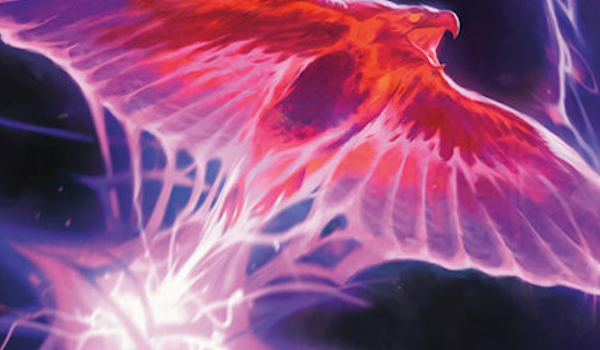Are you a Quiet Speculation member?
If not, now is a perfect time to join up! Our powerful tools, breaking-news analysis, and exclusive Discord channel will make sure you stay up to date and ahead of the curve.
It has now been a full week since Innistrad: Midnight Hunt hit MTGO and a couple of days since it became paper legal. So I'm able to start measuring the initial impact on Modern. And... it's minimal. Not that I was expecting too much from the set. However, I did at least think that nostalgia and a desire to brew would induce some players to branch out and try new decks. However, as far as the data is concerned, that isn't happening. The data from the past week looks basically identical to the previous weeks. Which is odd, considering how hyped one deck in particular was.
In my spoiler review, I mentioned that I was certain that Consider and Faithful Mending would revive Jeskai Phoenix. I had no idea if it would be good, but it would definitely see play out of nostalgic hope that Jeskai Phoenix is, in fact, good. And I was right, if only thanks to the numbers of streamers and Youtubers playing Jeskai Phoenix. Naturally, I expected that placings in the Preliminaries and Challenges would follow. They have not. Aspiringspike's list from the first weekend of legality is the only Premier result for Jeskai Phoenix, even considering that there's usually a huge influx of players on a new deck right after release and then a dramatic drop-off. The difference is that Phoenix isn't entirely new, nor is it entirely fixed.
The Deck
Not for the first time, I find a surprising lack of innovation among the lists. Every list I've seen is taking their cues or even whole list from Aspiringspike. Which is fair, he does have the only result and has put out a lot of Phoenix content recently. However, I have to ask if all this following the leader is helping or hurting. Spike's a good player and deckbuilder, but did he actually get it right, or is there value in going another direction? Certainly, his list isn't putting up numbers. However, it is what we have to work with, and so here's the latest build I could find.
Jeskai Phoenix, Aspiringspike (League 4-1)
And it's basically the same as his first lists. Does Spike really believe this is the best list or has he simply not had to change anything? Is there a difference? These are the kinds of questions that keep me up at night.
 Expanding into white allows the deck to run everyone's favorite multipurpose removal spell in Prismatic Ending, and I actually think that's a greater argument for going Jeskai than even Faithful Mending. The old decks often struggled against non-creature, non-planeswalker decks and now they have a multipurpose answer to everything. Hole closed.
Expanding into white allows the deck to run everyone's favorite multipurpose removal spell in Prismatic Ending, and I actually think that's a greater argument for going Jeskai than even Faithful Mending. The old decks often struggled against non-creature, non-planeswalker decks and now they have a multipurpose answer to everything. Hole closed.
One thing I find odd is no Expressive Iteration. Every other deck with UR as main colors has been running this two mana draw 1-2 since Strixhaven, so its absence is notable. I do know that there's no room for all the 1-mana cantrips, Manamorphose, and the two ways to discard the threats. And also that it's unlikely that Phoenix or Demilich will be cast from exile. However, when an otherwise ubiquitous card is missing from a list, it's worth taking notice.
What's New?
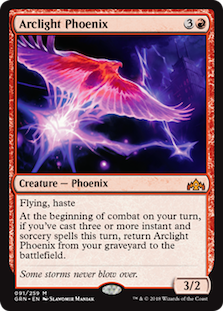 It's tempting to say nothing. Really tempting. And the problem is that while it isn't true, it's not wrong, either. Strategically and even structurally, the deck hasn't really changed since 2018. Therefore, by all means, it's safe to rely on the guides and commentary from 2018/2019 to learn the deck. The deck's gameplan is the same as it's always been.
It's tempting to say nothing. Really tempting. And the problem is that while it isn't true, it's not wrong, either. Strategically and even structurally, the deck hasn't really changed since 2018. Therefore, by all means, it's safe to rely on the guides and commentary from 2018/2019 to learn the deck. The deck's gameplan is the same as it's always been.
However, a couple things have changed just enough to make a difference in how games play out. Again, the plan of Phoenix decks has not really changed, but how it feels has. Jeskai Phoenix is at least a turn slower than 2019 Izzet Phoenix. There's no way to dump drawn Phoenixes (or Demiliches) turn one to set 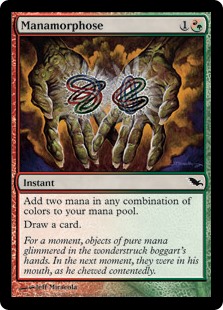 up for a big swing turn two. Consider binning Phoenix into Manamorphose and Mending (pitching two Phoenix's) and Gut Shot is the main line for a big swing turn, and that's improbable.
up for a big swing turn two. Consider binning Phoenix into Manamorphose and Mending (pitching two Phoenix's) and Gut Shot is the main line for a big swing turn, and that's improbable.
Instead, this is very much an avalanche style deck. It won't do much but durdle for the first few turns, but once it does get going, things become overwhelming. It can blast out multiple early Phoenixes, but in my experience, it typically gets them out one or two at a time and adds more depending on opposing answers. More commonly, and I think more potently, it can ride Demilich as both a clock and card advantage tool. Demilich doesn't immediately generate advantage or trade well. Rather, it just incrementally pulls ahead of opposing fair decks until there's no return. And that is a big change from the earlier builds.
Why It's Good
Which is also the single biggest advantage I've found with Jeskai Phoenix. The gameplan is, again, largely unchanged, but it feels more complete. The 2019 version was all about chaining  spells into one big payoff, and afterward they didn't really do anything. Now there's a reason to keep the deck churning so Demilich can keep building its card advantage wave.
spells into one big payoff, and afterward they didn't really do anything. Now there's a reason to keep the deck churning so Demilich can keep building its card advantage wave.
However, there's also the fact that all the threats in Jeskai Phoenix cost four. There's been a trend for decks to up the curve of their threats thanks to Prismatic Ending. Which is currently the second highest played removal spell in Modern behind Lightning Bolt. When any deck can permanently remove any 1-2 mana threat, it makes perfect sense to go bigger. Four is a particularly dangerous number in this regard. The triomes let decks splash colors easily, which in turn makes Ending more widespread. However, there's a catch. A single triome is pretty free, but every one after the first is risky, as it slows the mana. It becomes significantly harder for decks to hit four-mana threats, which means that Phoenix can grind through the non-exile removal easily.
A Lesson in Ironworking
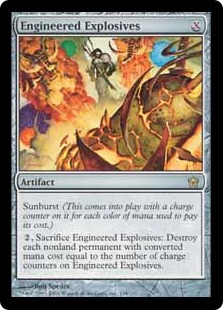 At the same time, Phoenix is also running Ending, harkening back to a different banned deck. Remember Krark-Clan Ironworks? The problem with that deck wasn't the combo or engine card itself but instead it was Engineered Explosives. The card fit perfectly into the general combo gameplan while also providing a maindeck answer to all relevant hate. Ending is now doing that job in Phoenix. Ending will normally be used defensively against threats, but can be used to clear the way for attacks while enabling the threats. Also and again, Ending answers hate that used to give Phoenix trouble, most importantly Ensnaring Bridge and Rest in Peace.
At the same time, Phoenix is also running Ending, harkening back to a different banned deck. Remember Krark-Clan Ironworks? The problem with that deck wasn't the combo or engine card itself but instead it was Engineered Explosives. The card fit perfectly into the general combo gameplan while also providing a maindeck answer to all relevant hate. Ending is now doing that job in Phoenix. Ending will normally be used defensively against threats, but can be used to clear the way for attacks while enabling the threats. Also and again, Ending answers hate that used to give Phoenix trouble, most importantly Ensnaring Bridge and Rest in Peace.
Improved Sideboard
 This logic extends to the sideboard as well. White has always had the best sideboard cards and Phoenix can finally avail itself rather than just being victimized. I imagine a lot of players focus in on the Path to Exiles against creature decks, but the bigger addition is Wear // Tear. This is by far the bigger pickup simply because it's one of the best sideboard answers around. No other piece of artifact and enchantment removal can remove two permanents for three mana, and more importantly, fuse lets it get around Chalice of the Void. This is where I think there's a lot more value to be derived than what Spike managed, and would be interested to see more development of the sideboard.
This logic extends to the sideboard as well. White has always had the best sideboard cards and Phoenix can finally avail itself rather than just being victimized. I imagine a lot of players focus in on the Path to Exiles against creature decks, but the bigger addition is Wear // Tear. This is by far the bigger pickup simply because it's one of the best sideboard answers around. No other piece of artifact and enchantment removal can remove two permanents for three mana, and more importantly, fuse lets it get around Chalice of the Void. This is where I think there's a lot more value to be derived than what Spike managed, and would be interested to see more development of the sideboard.
Metagame Positioning
The biggest plus for Jeskai Phoenix at the moment is its metagame positioning. The metagame is not well prepared against Phoenix's strategy, which is part of why Ending has been good. Both maindeck and sideboard cards are being chosen for their strengths against the big four decks (currently: Hammer Time, Cascade Crashers, UR Thresh, and UW Control) and Phoenix is positioned to exploit that lack of focus. It's particularly apparent in 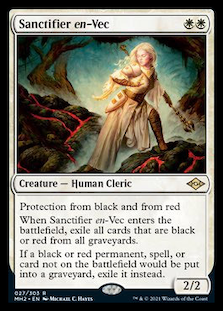 sideboard cards where Sanctifier en-Vec is the most common form of graveyard hate thanks to it's phenomenal positioning against UR Thresh. Phoenix can answer Sanctifier, but it also relies more on blue and white cards than red ones to fuel its engine, dodging most of the hate.
sideboard cards where Sanctifier en-Vec is the most common form of graveyard hate thanks to it's phenomenal positioning against UR Thresh. Phoenix can answer Sanctifier, but it also relies more on blue and white cards than red ones to fuel its engine, dodging most of the hate.
Furthermore, Phoenix is far less vulnerable to Chalice of the Void, and not just thanks to Ending. Chalice on one shut down all the cantrips including the critical Faithless Looting before the ban. Mending costing two makes it dodge most Chalices and subsequently means the engine can keep going and dig for answers or threats. On a similar note, with Ragavan and Dragon's Rage Channeler on players' minds, Path to Exile isn't seeing much play, and that card really ruins Phoenix's day.
Why It's Bad
Of course, there are good reasons that Jeskai Phoenix isn't seeing play. Some are more legitimate than others, and at the top of the legitimate list is that Phoenix is far more linear than before. The older lists wanted their graveyards as a resource, and not just because that's how they dumped power into play to quickly win the game. However, they didn't absolutely 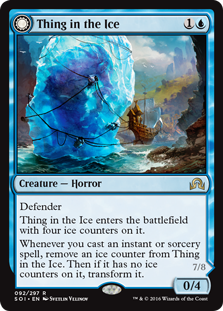 need them. Thing in the Ice was the primary backup threat and worked perfectly well under Rest in Peace. Similarly, Crackling Drake's power was unaffected and provided a solid backup to Thing. While the other option, Bedlam Reveler, doesn't strictly need a graveyard to function, paying full price for that card is a losing proposition.
need them. Thing in the Ice was the primary backup threat and worked perfectly well under Rest in Peace. Similarly, Crackling Drake's power was unaffected and provided a solid backup to Thing. While the other option, Bedlam Reveler, doesn't strictly need a graveyard to function, paying full price for that card is a losing proposition.
There's no Thing in Jeskai Phoenix. There isn't even an equivalent. All the deck's threats absolutely hinge on the graveyard to be good. Without a graveyard to flashback spells from, Demilich is a vanilla 4/3. For whatever reason, players are sticking to the all-graveyard attack plan, and that means that when they do run into non-Sanctifier hate they're just finished. Surgical Extraction was painful in 2019, but now it's practically lethal. The deck is far too narrow these days and easily answered if the opponent is ready.
A Strength and Weakness
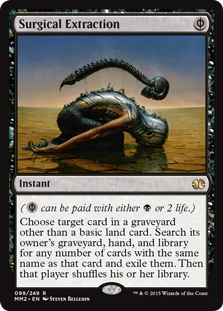 And that's not even discussing the fact that the big strength I mentioned is also a weakness. By being slower, Phoenix is able to snowball and overwhelm the fair decks and thus win in a relatively fair metagame. However, it can't effectively race anything anymore unless it has an abnormally good hand. Phoenix's biggest strength before was that its clock kept pace with the best combo and aggro decks while being too fast for control to contain. Now it has to win the hard way, and that is a much bigger problem. Creatures have gotten bigger and Thassa's Oracle gives combo a sneaky way to win. The latter is not currently much of a problem, but a slower value deck having to contend with 8 power of rhino on turn 3 certainly is.
And that's not even discussing the fact that the big strength I mentioned is also a weakness. By being slower, Phoenix is able to snowball and overwhelm the fair decks and thus win in a relatively fair metagame. However, it can't effectively race anything anymore unless it has an abnormally good hand. Phoenix's biggest strength before was that its clock kept pace with the best combo and aggro decks while being too fast for control to contain. Now it has to win the hard way, and that is a much bigger problem. Creatures have gotten bigger and Thassa's Oracle gives combo a sneaky way to win. The latter is not currently much of a problem, but a slower value deck having to contend with 8 power of rhino on turn 3 certainly is.
The Substitute Effect
There's also the less legitimate reason that players just aren't excited by the ability to play Phoenix again. Phoenix was The Deck of late 2018/early 2019 and many players got their fill back then. There's no excitement over getting to play something new, more a nostalgia for what was, and that doesn't bring in the pilots. Moreover, there's a reluctance to try the deck when UR Thresh is doing something similar, is a known good deck, and doesn't demand four new mythic rares. Why take the risk on something unknown? There's just not a good enough reason to want to play Jeskai Phoenix over the alternatives. Maybe with more refinement and a change in attitudes but not right now.
Time Always Tells
However, this is only the first week. Anything is possible down the line and as next week's metagame update will show, the metagame is already shifting. Perhaps the changes will incentivize playing new decks rather than old standbys and lead to more brewing.


